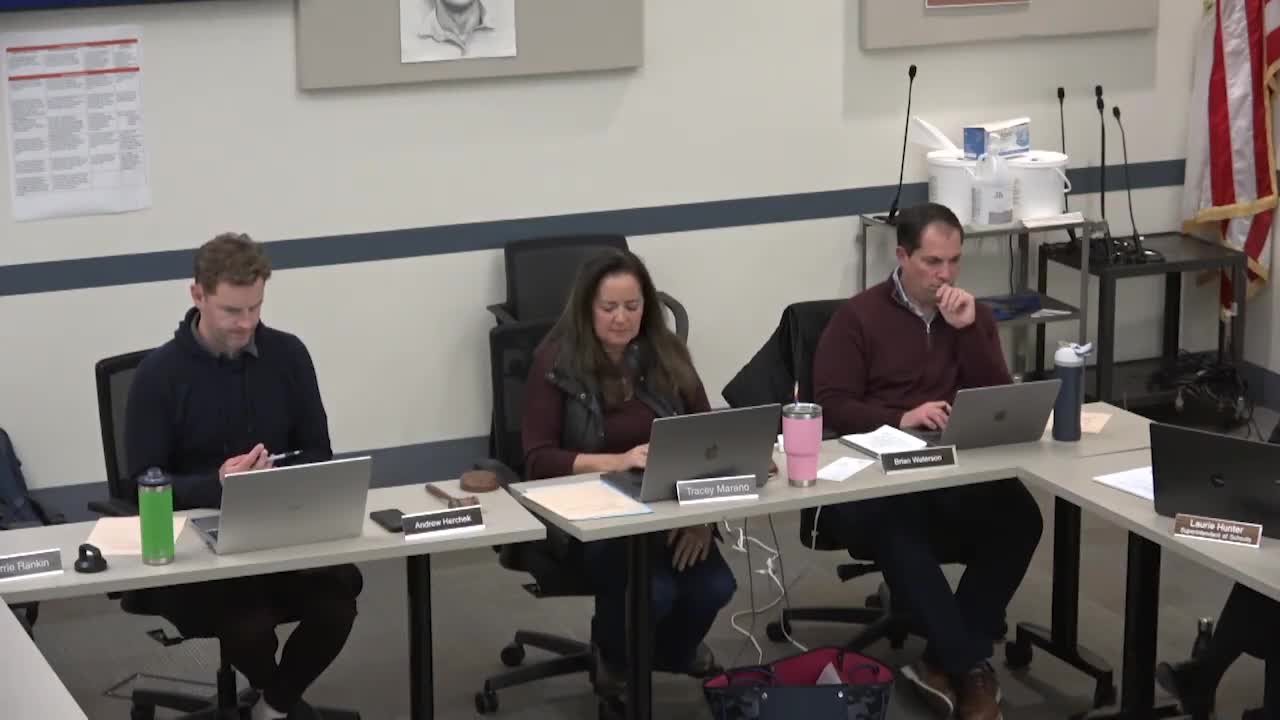School committee approves FY26 quarter‑one transfers; capital plan flags turf replacement and HVAC needs
November 06, 2025 | Concord Public Schools/Concord-Carlisle Regional District, School Boards, Massachusetts
This article was created by AI summarizing key points discussed. AI makes mistakes, so for full details and context, please refer to the video of the full meeting. Please report any errors so we can fix them. Report an error »

The Concord‑Carlisle Regional School Committee approved its FY26 first‑quarter transfers and spent significant time discussing a proposed five‑year capital plan that includes classroom painting, new lighting controls, rooftop HVAC replacement, vehicle replacements and a planned turf replacement for Doug White Field.
Business manager Bob presented the transfers, which he described as largely driven by staffing changes and standard reclassifications; he said the transfers were net zero and noted that fixed charges and debt service schedules will consume a meaningful portion of the district’s available funds. "We went in at 3.5% for the district and negative 0.9% for the region," Bob said reviewing budget guideline history; the committee then approved the transfers by roll call.
On capital priorities, Bob outlined timing and costs for multi‑year needs: paint and classroom refreshes to coincide with interactive whiteboard replacements, upgrades to obsolete lighting control systems, replacement of multiple rooftop HVAC compressors as units age, and a multi‑year plan for turf replacement on Doug White Field (a typical useful life is roughly 10 years). He told the committee Doug White’s turf has deteriorated and noted testing protocols (GMax) can signal when replacement is urgent.
To pay for the work while avoiding a large single‑year town impact, Bob proposed a funding approach that repurposes some OPEB contributions and uses the district’s capital stabilization fund to smooth costs: a lump contribution in FY27 and another in FY28 would cover near‑term needs and the turf replacement without asking the towns for additional one‑time amounts. Committee members raised questions about escalation, eligibility for MSBA funding (turf and many items are not MSBA‑eligible), and whether to front‑load design work. Members also discussed the political sensitivity of redirecting OPEB and the need to preserve long‑term retiree health funding; Bob responded that the district’s OPEB trust is in a strong position and that the proposal was intended to limit town budget impacts while addressing pressing capital items.
The committee did not vote on the capital plan itself; committee members asked staff to provide refined cost estimates and timing and to discuss the proposal with the finance committees in upcoming budget meetings.
Business manager Bob presented the transfers, which he described as largely driven by staffing changes and standard reclassifications; he said the transfers were net zero and noted that fixed charges and debt service schedules will consume a meaningful portion of the district’s available funds. "We went in at 3.5% for the district and negative 0.9% for the region," Bob said reviewing budget guideline history; the committee then approved the transfers by roll call.
On capital priorities, Bob outlined timing and costs for multi‑year needs: paint and classroom refreshes to coincide with interactive whiteboard replacements, upgrades to obsolete lighting control systems, replacement of multiple rooftop HVAC compressors as units age, and a multi‑year plan for turf replacement on Doug White Field (a typical useful life is roughly 10 years). He told the committee Doug White’s turf has deteriorated and noted testing protocols (GMax) can signal when replacement is urgent.
To pay for the work while avoiding a large single‑year town impact, Bob proposed a funding approach that repurposes some OPEB contributions and uses the district’s capital stabilization fund to smooth costs: a lump contribution in FY27 and another in FY28 would cover near‑term needs and the turf replacement without asking the towns for additional one‑time amounts. Committee members raised questions about escalation, eligibility for MSBA funding (turf and many items are not MSBA‑eligible), and whether to front‑load design work. Members also discussed the political sensitivity of redirecting OPEB and the need to preserve long‑term retiree health funding; Bob responded that the district’s OPEB trust is in a strong position and that the proposal was intended to limit town budget impacts while addressing pressing capital items.
The committee did not vote on the capital plan itself; committee members asked staff to provide refined cost estimates and timing and to discuss the proposal with the finance committees in upcoming budget meetings.
View full meeting
This article is based on a recent meeting—watch the full video and explore the complete transcript for deeper insights into the discussion.
View full meeting
